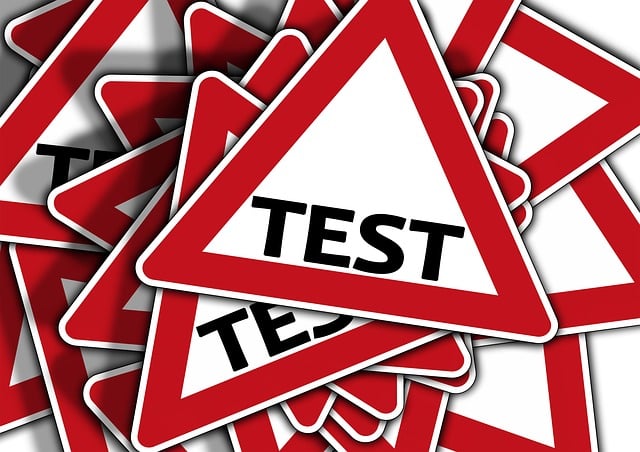The VIN inspection is a compulsory step for registering a vehicle or transferring plates, ensuring the vehicle's details align with DMV records to prevent fraud and maintain accurate ownership documentation. To navigate this process efficiently, individuals must familiarize themselves with the DMV VIN inspection locations, which are specially equipped for VIN number verification. It is crucial to have all necessary documents—proof of ownership, a valid driver's license, and insurance information—ready before the inspection. The DMV VIN check requirements stipulate that the vehicle must be operational and present at the designated inspection site for an accurate examination by authorized personnel. By preparing and understanding these requirements, individuals can avoid delays and ensure their vehicle's successful registration, adhering to state regulations. The VIN number verification is integral to the DMV vehicle verification process, and it is important to contact inspection sites beforehand to confirm the specific VIN verification steps. Proper preparation, including having all required documents in order, will streamline the DMV registration inspection process, ensuring a smooth experience for vehicle registration transfer or first-time registration. Always refer to your state's DMV website or customer service for specific VIN inspection location details and checklists, as requirements may vary based on local laws and regulations.
When transitioning vehicles across state lines or registering a new car with the Department of Motor Vehicles (DMV), verifying the Vehicle Identification Number (VIN) is an indispensable step. The DMV vehicle verification process, involving a thorough VIN inspection, is designed to align the vehicle’s details with your registration documents. This article elucidates the VIN verification process for DMV registration, guides you to the nearest DMV VIN inspection sites, outlines the necessary documentation, and offers tips for a streamlined DMV registration inspection. Understanding these steps ensures compliance and facilitates a seamless transition into your new state or vehicle ownership.
- Understanding the VIN Verification Process for DMV Registration
- Locating DMV VIN Inspection Sites Near You
- Necessary Documents and Requirements for a VIN Number Verification at the DMV
- Streamlining Your DMV Vehicle Verification: Tips for a Hassle-Free Inspection Process
Understanding the VIN Verification Process for DMV Registration
When transitioning a vehicle from an out-of-state plate to new state registration or registering a vehicle for the first time, the DMV vehicle verification process is a pivotal step. The VIN inspection, a critical component of this process, serves as a mechanism to verify the vehicle’s authenticity and ensure that it aligns with the records maintained by the Department of Motor Vehicles (DMV). During the VIN number verification, key details such as the vehicle’s make, model, year, and unique identifier—the Vehicle Identification Number (VIN)—are cross-referenced against the provided title and registration documents. This step is essential to prevent fraudulent activities and to maintain accurate vehicle ownership records.
To facilitate a smooth DMV registration inspection process, it is imperative to be well-acquainted with the DMV VIN inspection locations. These designated centers are equipped to perform the VIN verification process accurately. Prospective registrants should prepare the necessary documentation in advance, including proof of ownership, a valid driver’s license, and insurance information. Adhering to the DMV VIN check requirements is crucial for a successful inspection. The requirements typically stipulate that the vehicle must be present at the DMV VIN inspection location, operational, and accessible for a thorough examination by authorized personnel. By understanding these requirements and locating the nearest DMV VIN inspection sites, individuals can expedite their registration process and ensure compliance with state regulations.
Locating DMV VIN Inspection Sites Near You
When navigating the DMV vehicle verification process, locating an authorized VIN inspection site is a pivotal step for ensuring your out-of-state or newly purchased vehicle meets state regulations for registration. The VIN number verification is an integral component of this process, as it confirms the vehicle’s details with the official DMV VIN inspection locations’ database. To initiate the DMV VIN check requirements, start by consulting your state’s DMV website or contact their customer service directly. These resources will provide a comprehensive list of certified VIN inspection sites near you. Typically, these sites include select auto repair shops, dealerships, and independent inspectors endorsed by the DMV. Once at the site, an inspector will use the vehicle’s VIN to access its title history, odometer reading, brand history, and other critical information, ensuring it aligns with your paperwork. This alignment is crucial for a successful DMV registration inspection process, as discrepancies can lead to delays or denials of your registration application. It’s advisable to call ahead and confirm the VIN verification process details, as requirements may vary by location and over time. Preparation and knowledge of the DMV VIN inspection locations and associated checklist will facilitate a smooth and efficient vehicle verification experience.
Necessary Documents and Requirements for a VIN Number Verification at the DMV
When preparing to register a vehicle with the DMV following an interstate move or purchase, a VIN number verification is an indispensable step in the process. The VIN inspection, a crucial component of the DMV vehicle verification system, ensures that the vehicle’s Vehicle Identification Number matches official records and confirms the authenticity of the vehicle. This process is integral to prevent fraud and ensure public safety. To facilitate this, you must present specific documents and meet certain requirements during the DMV VIN inspection. Typically, you will need the current registration from your previous state or country, a valid driver’s license, and proof of insurance. Additionally, the vehicle’s title is essential to provide, as it should bear the VIN and be signed over to you if the vehicle’s ownership has changed. The DMV VIN inspection locations are designed to be accessible, with many offering appointments to minimize wait times. It’s advisable to check with your local DMV office for their specific document requirements, as they may vary based on state regulations and the type of vehicle. The DMV registration inspection process requires a comprehensive approach, where the VIN is checked against the vehicle’s title, odometer reading, and other pertinent details. Ensuring all paperwork is in order before arriving at the DMV VIN inspection location will streamline the verification process and help you complete your registration without undue delay. Remember to have all documents, including the vehicle’s registration and title, ready for inspection, as the DMV check requirements are stringent and non-negotiable to maintain the integrity of the DMV vehicle verification system.
Streamlining Your DMV Vehicle Verification: Tips for a Hassle-Free Inspection Process
When navigating the DMV vehicle verification process, knowing the VIN inspection specifics and preparation steps is crucial for a hassle-free experience. Begin by gathering all necessary documents related to your vehicle, including the registration from your previous state if you’re an out-of-state applicant. Ensure that these documents are up-to-date and accurately reflect your vehicle’s information. The VIN number verification is a cornerstone of this process; it involves inspecting the Vehicle Identification Number to ensure it aligns with DMV records. This step is pivotal for confirming the authenticity of the vehicle and its history, which can affect insurance rates and compliance with state regulations.
To streamline your DMV VIN inspection, familiarize yourself with the designated DMV VIN inspection locations in your area. These centers are equipped to handle VIN verification process requirements efficiently. Many states have specific locations that are authorized for VIN checks, so verify this ahead of time to avoid unnecessary travel. Additionally, be aware of the DMV registration inspection criteria; some states may require proof of ownership, a current odometer reading, or evidence of recent emissions testing, depending on local laws and regulations. By preparing these documents in advance and understanding the VIN verification process, you can minimize wait times and ensure a smooth registration process. Remember to check your state’s specific requirements for the DMV VIN check as they can vary, ensuring that your vehicle inspection goes off without a hitch.
When registering a vehicle with the DMV, whether it’s an interstate transfer or a new purchase, the VIN number verification is an indispensable step. This process ensures that your vehicle’s records align accurately with your registration application. By understanding the VIN verification process and locating nearby DMV VIN inspection sites, you can navigate this requirement with confidence. Remember to prepare all necessary documents as outlined in the DMV VIN check requirements to facilitate a swift and efficient DMV registration inspection. With these resources at hand, your vehicle’s registration will be completed without delay, allowing you to legally and safely drive on public roads.



